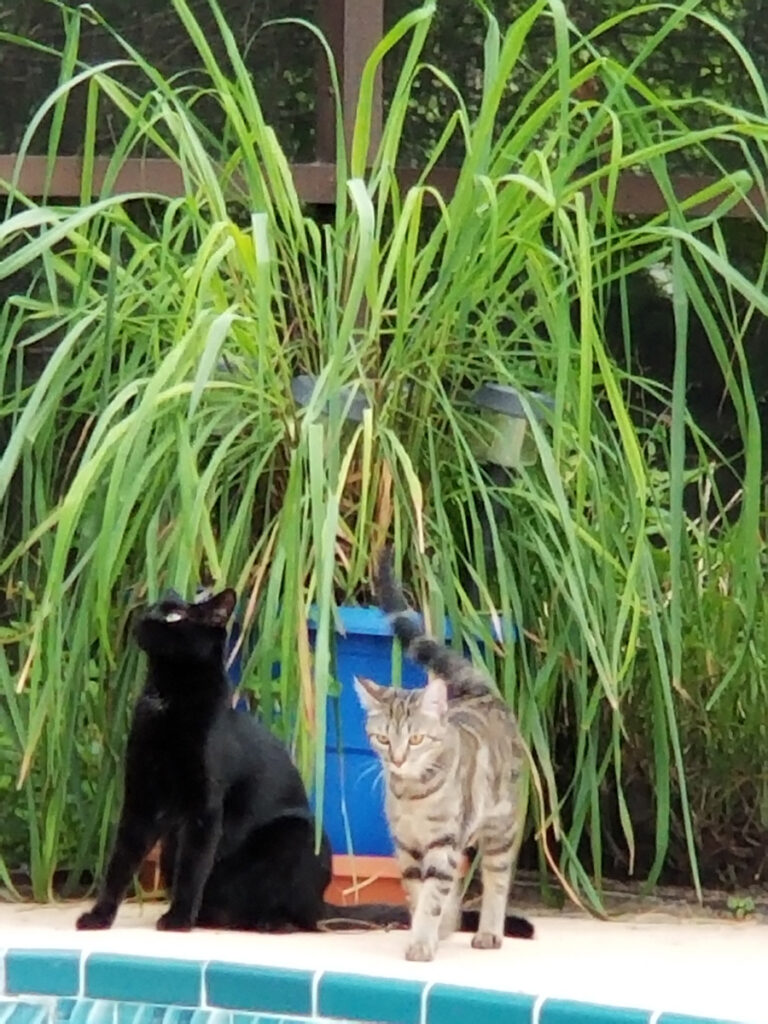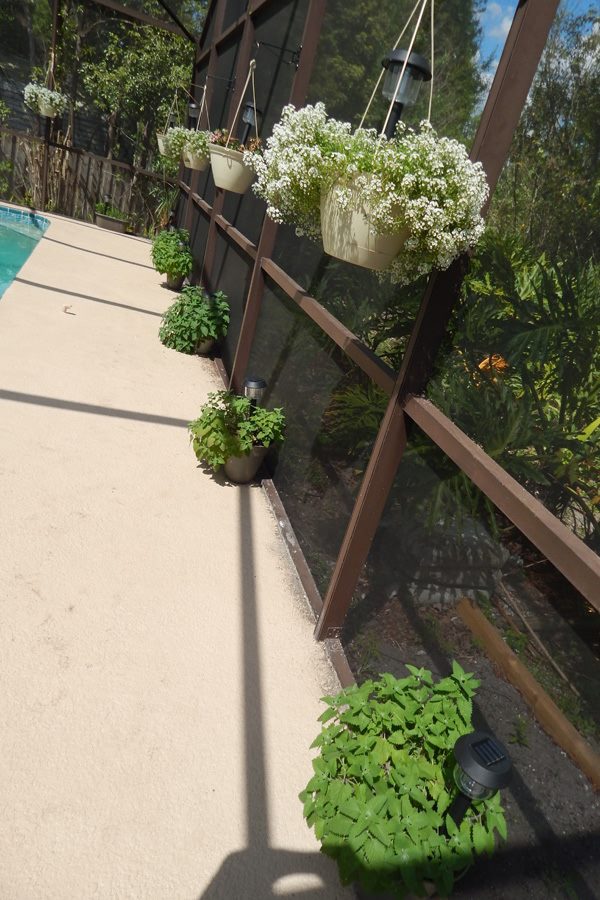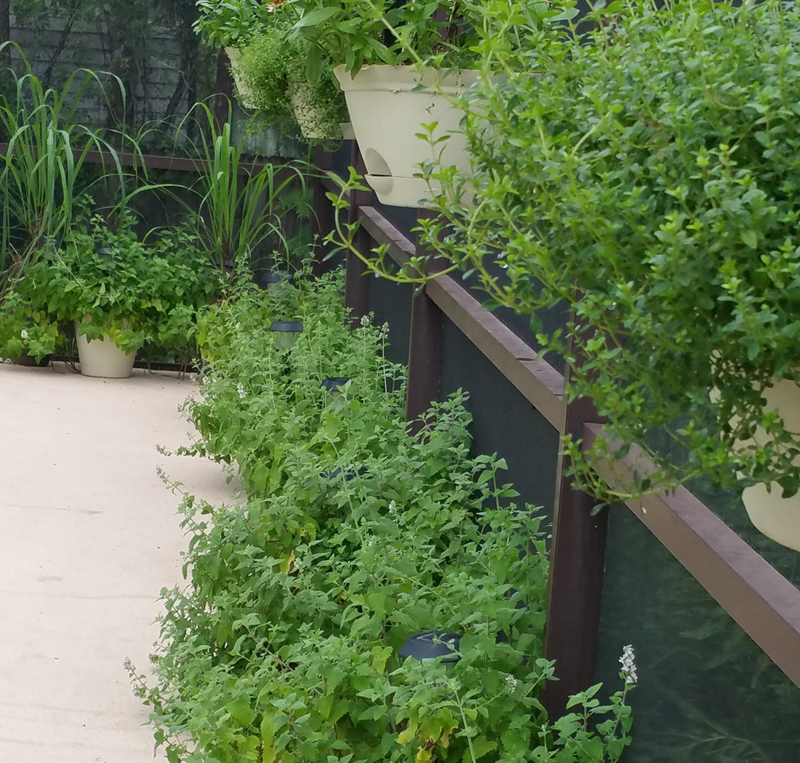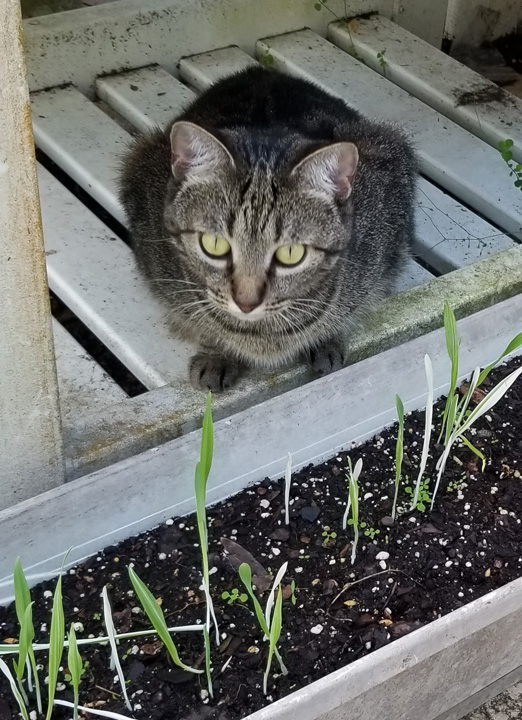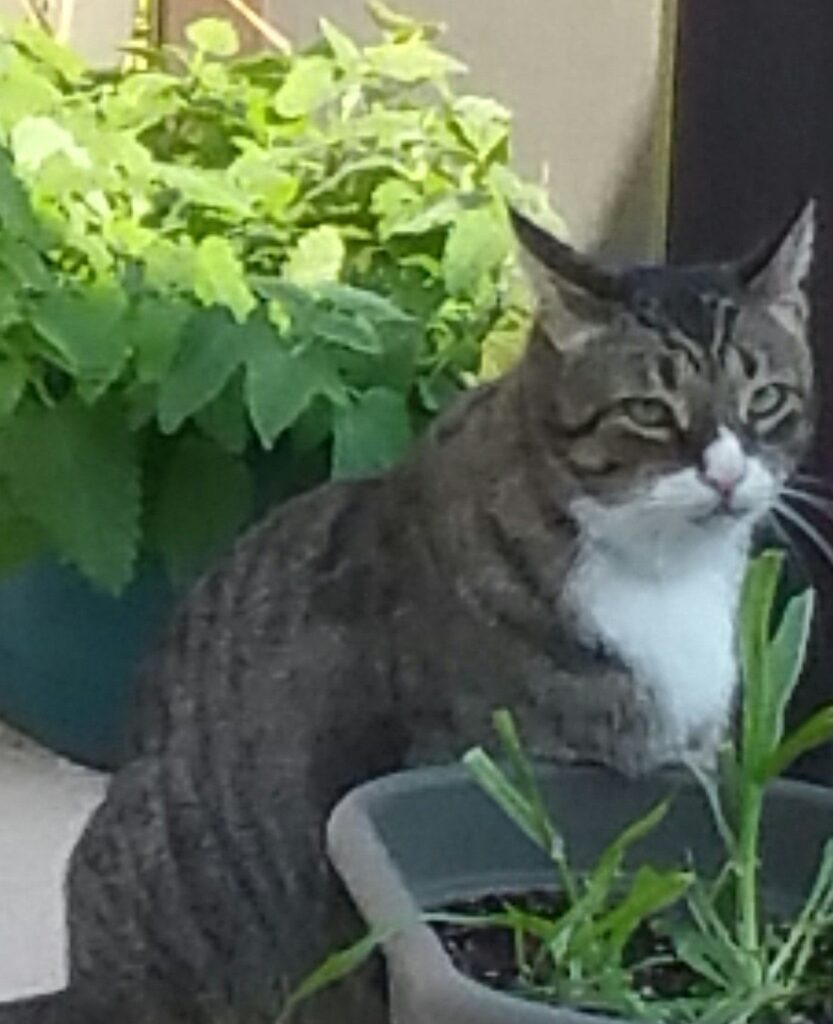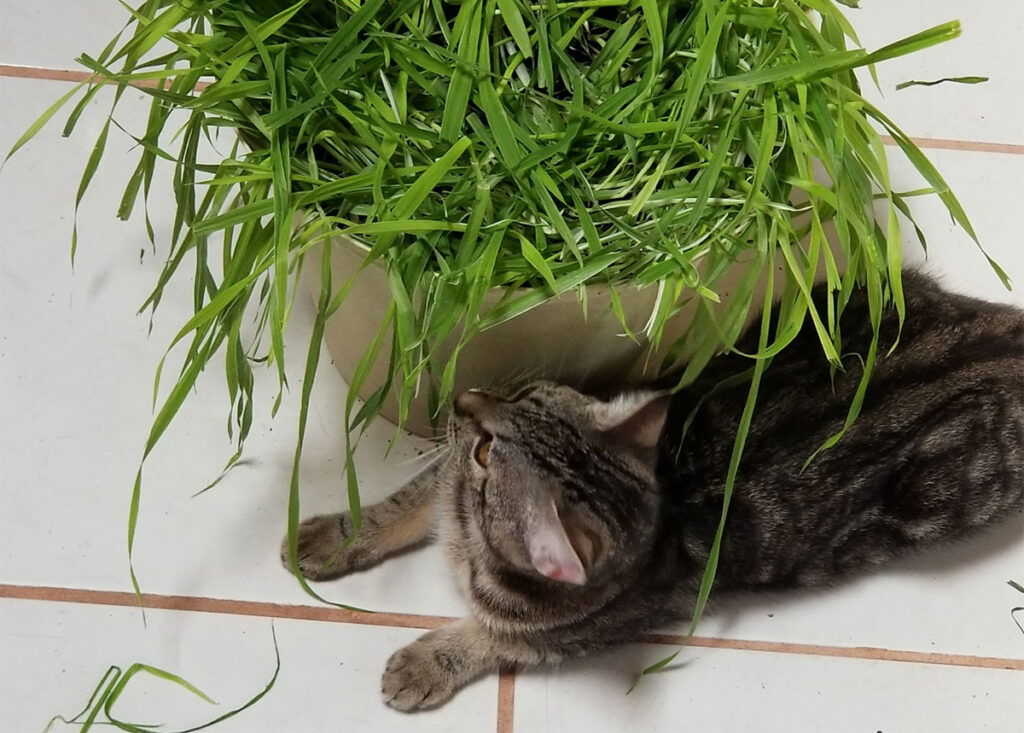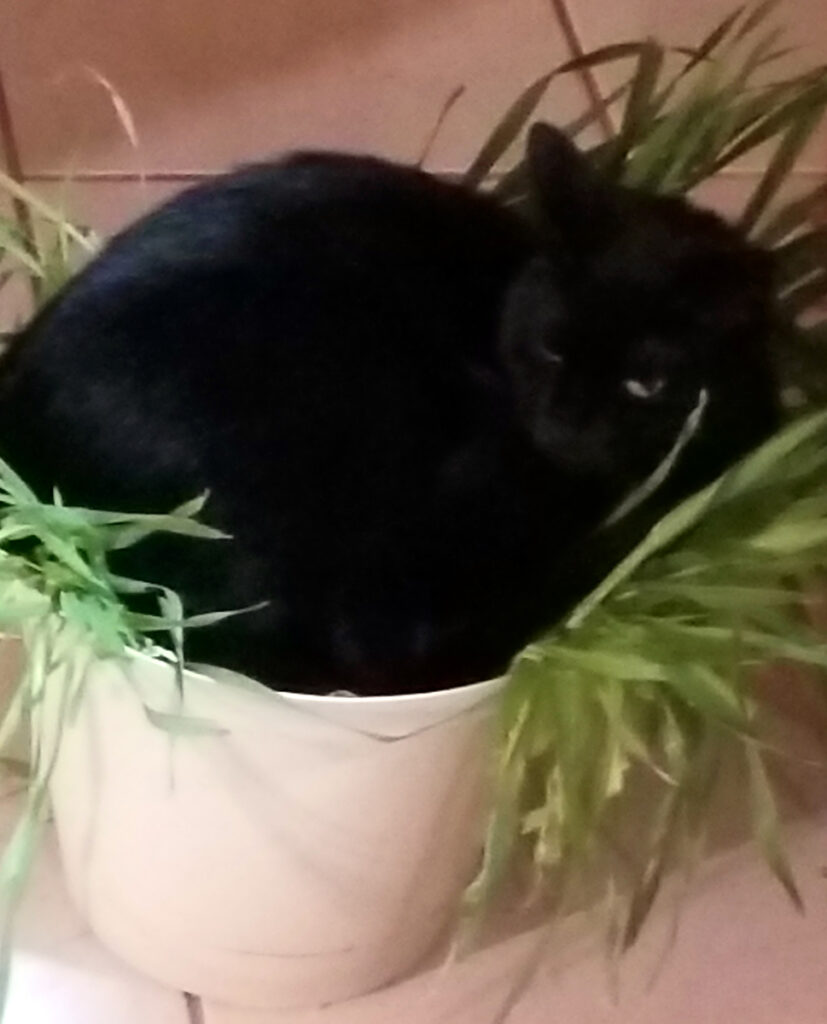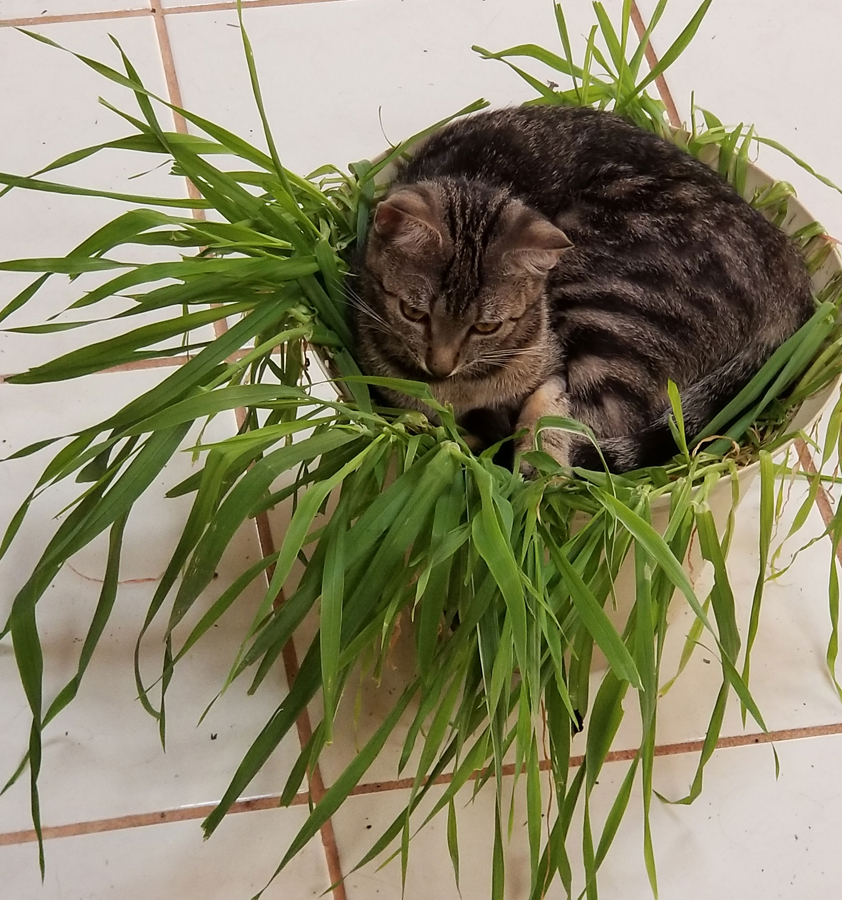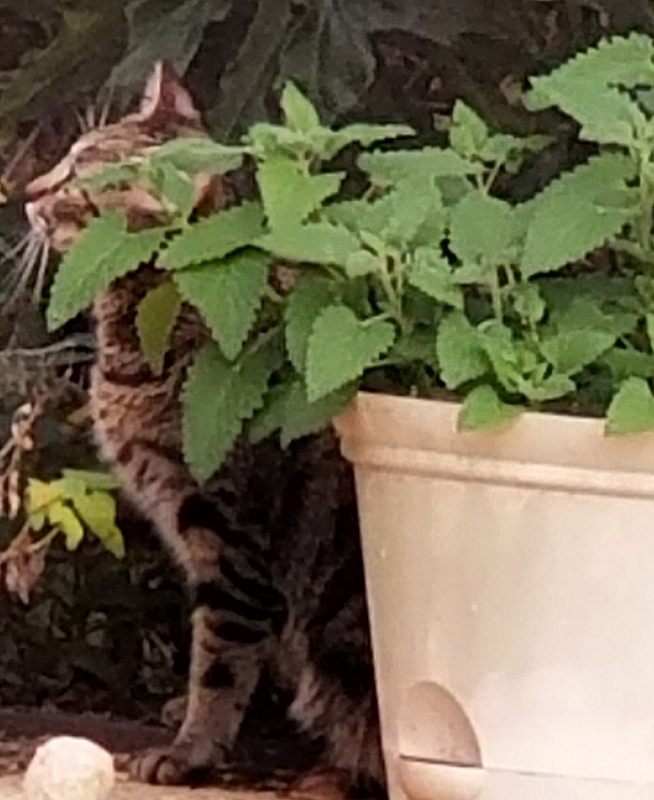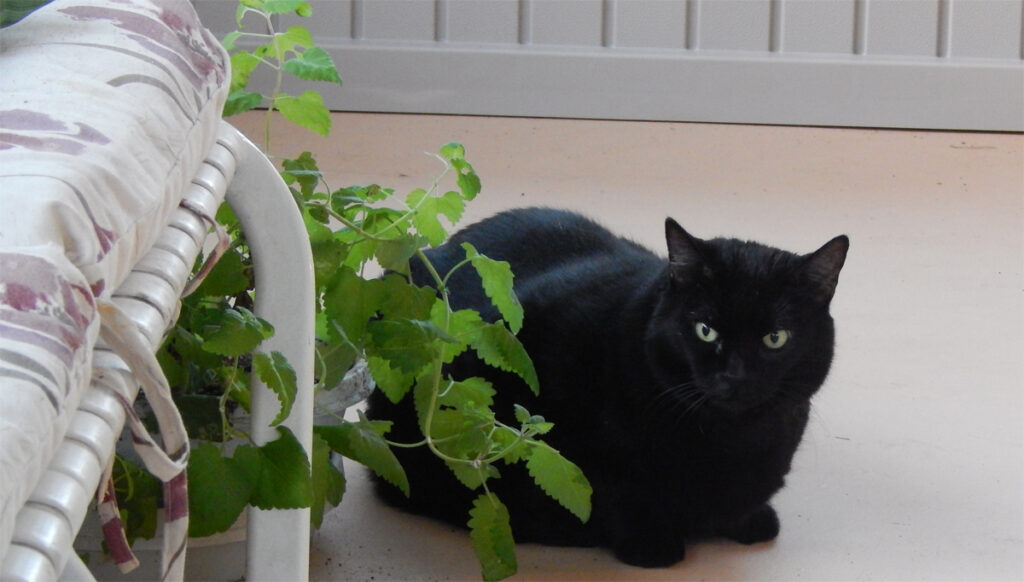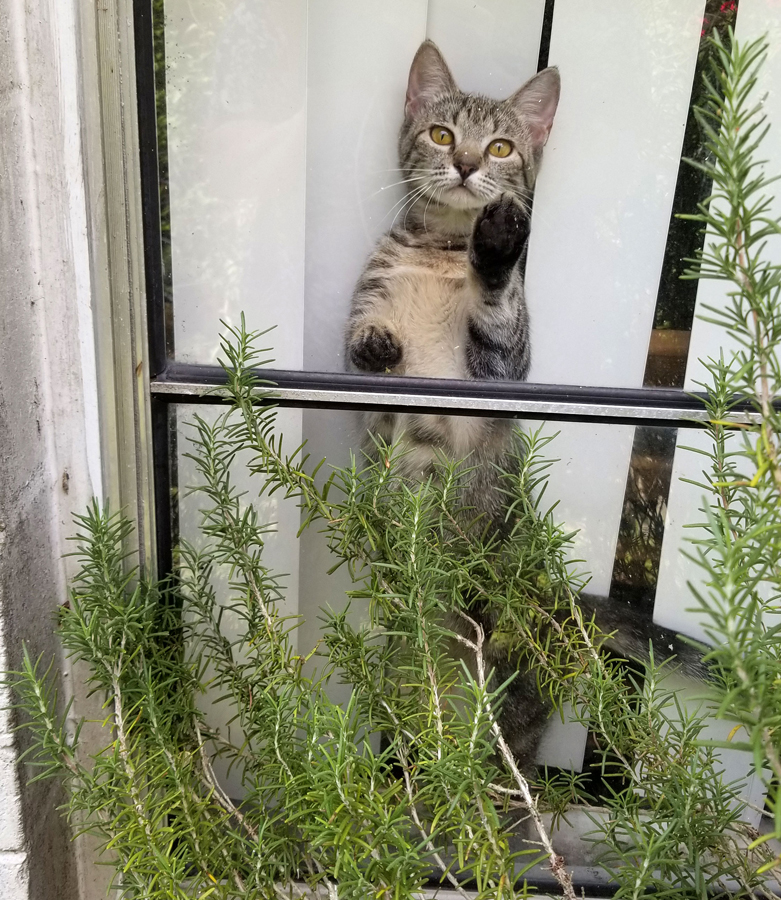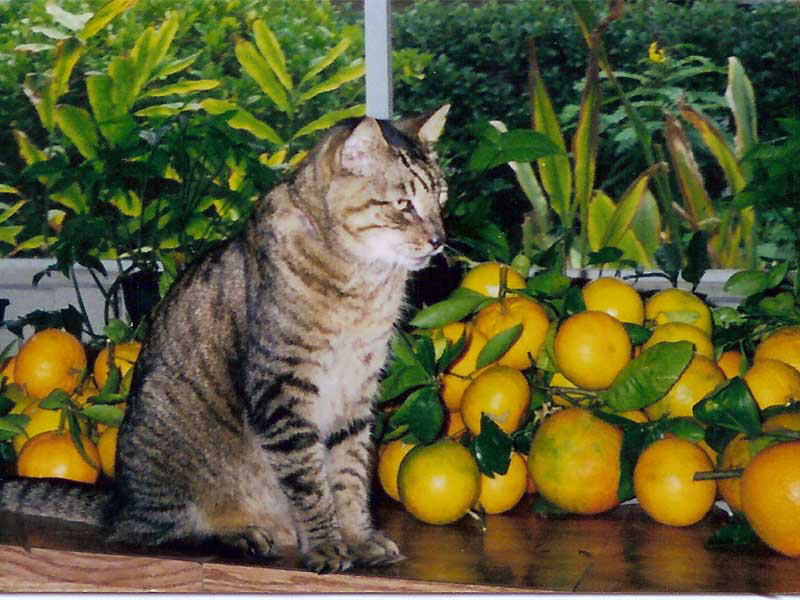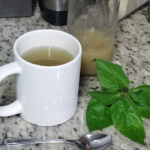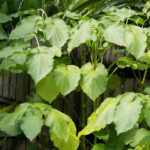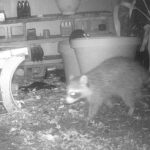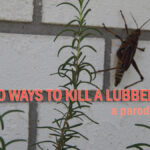While organizing information for this post, I glanced at an ASPCA page about toxic plants and pets. I was surprised to see that they list lemongrass as potentially harmful because of the essential oils. Every cat that has lived with us over the past 30 years has nibbled lemongrass on a near-daily basis.
Look. I’m not suggesting that we ignore warnings from the ASPCA. When it comes to cats, or anything else that we care about, always seek out the most reliable information. Always use your best, and best informed judgment. However, a consideration of one’s own experiences must also be given some weight. My cats really do love lemongrass.
There are reasons why I suspect lemongrass could be of more concern for horses and dogs. The better developed essential oils are going to be down in the whiter center of the plant. The parts preferred for tea and other culinary uses. While cats nibble the green tips, a horse or a big dog just might chomp down on the entire plant.
A Garden for Cats
Only Reason, the big shaggy black cat in one of the photos below, ever vomited lemongrass. No matter how often we brushed the big guy, he endured frequent issues with hairballs. So, occasionally, he vomited a hairball with a fragment of lemongrass attached to big clumps of hair. Considering the size of those hairballs – no I do not have a photo – I suspect this had more to do with the discomfort of a belly full of hair.
I also grow cat grass, which is a fiber-rich variegated barley. These cats have options, is what I’m saying. They also have catnip. These are the plants in their garden.
As I mentioned in another post concerning the potentially-harmful effects of lemon verbena for cats, level of concern has a lot to do with availability of plant options. If an outdoor cat feels the need for a plant-based snack, she’s not likely to go looking for an oleander, elephant’s ear, caladium or lily to nibble. More than likely, she’ll stop at the first blade of lawn grass. With the rich diversity of plants on my property, I have no concerns about a neighborhood cat selecting lemon verbena. Although, come to think of it, I have seen a neighborhood cat nibbling lemongrass in the garden.
Because I encourage birds and pollinators in my garden, any cat that lives with us must live indoors. At our old house indoors included a very large screened porch. At our current location we have a screened pool enclosure. These make ideal locations for cat gardens. This is where I grow cat grass, catnip and lemongrass. Here, I also grow my parthenocarpic cucumbers, experimentally. Ok. I checked. Just as I thought, cucumber plants are not toxic to cats. Not that my two show the slightest interest, other than to occasionally bat a dangling cucumber.
I also have some elevated planters of mint. Having easy access to preferred plants, the cats leave the mints alone. They do walk through the planters occasionally. This is fine. We suddenly get the most refreshing fragrance of mint, while doing out aquatic exercises.
Cat grass is easily grown from seed in any sunny location indoors. It is frequently available in handy kits where pet supplies are sold. My experience has been that the seed in these kits is not always as fresh as one might hope. For this reason I buy seed from trusted seed suppliers like Baker Creek and Park Seed.
